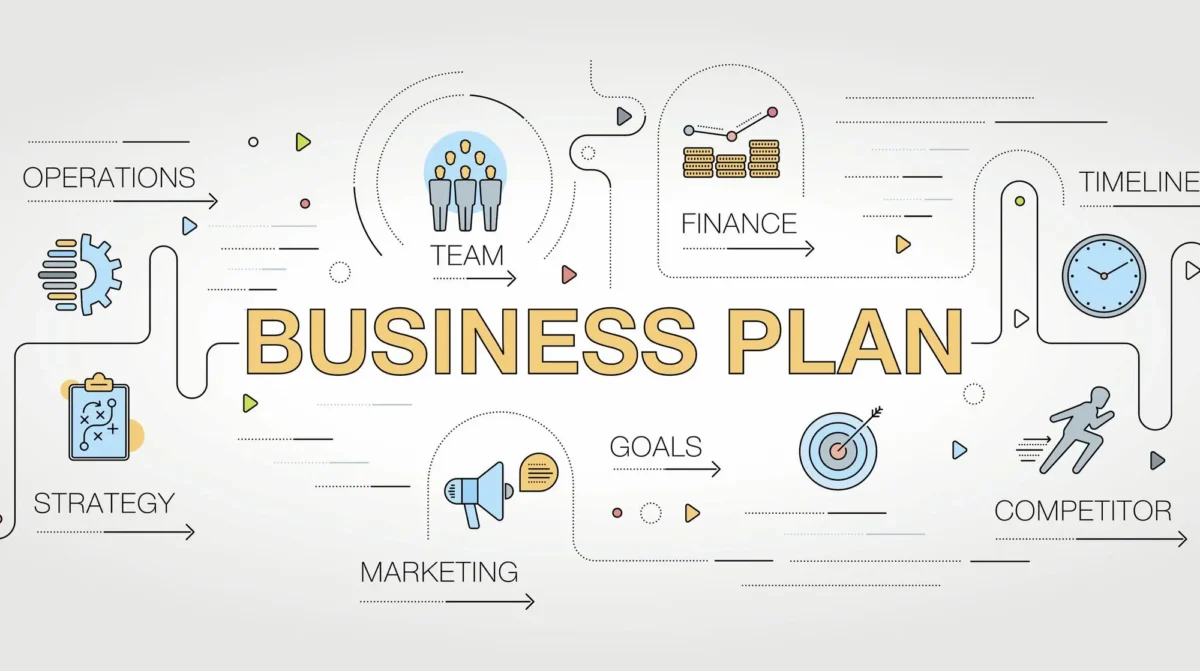A business plan is a comprehensive document that elaborately describes the production and business activities of an existing or future company. It includes an analysis of the company’s organizational structure, plans, development strategy, and external environment. This document allows businesses to evaluate the viability of a business idea at the preparatory stage, estimate how soon the new company will become profitable, and gauge its profitability level. Read on in the article to learn how to draw up a business plan.
When is a Business Plan Created?
The successful operation of a company crucially depends on the following processes:
- Understanding the current state of affairs;
- Envisioning the desired level;
- Planning the transition process from one state to another.
The business plan provides a detailed analysis of all these processes. It describes the company’s organizational structure, the strengths and weaknesses of the production process, the concept of the product or service, potential risks, and marketing and advertising strategies. The document also includes a market and competition analysis.
Whether you are planning to open a new company or a branch, or if an existing business is changing its strategy, a business plan helps to analyze the market and competitors, evaluate the business idea and potential risks, and determine the necessary resources and development strategies. If an existing enterprise changes its strategy, the business plan will help identify new directions for development, assess risks, and devise strategies to minimize them.
How to Draw Up a Business Plan? Step-by-Step Guide – Watch the Video
See our YouTube video for a step-by-step guide on what should be included in the sections of a business plan on our website.
12 Tips to Write the Perfect Business Plan
To attract foreign investment for opening a company, it is crucial to draw up a business plan prepared according to international standards, containing 12 sections. We will discuss this version of the document:
- Introduction and conclusions. Briefly describe the business idea and the needs of potential consumers you will address. Write conclusions after all sections of the business plan are completed, but place them at the beginning because a potential investor will want to review them first. In the conclusions, specify the needed investment amount, how soon you plan to open the company, and the main financial indicators (projected profitability and profit margins, payback period).
- Describe your business. Identify the industry you plan to enter and justify its attractiveness and potential. Describe your business concept, ownership structure, location, and name.
- Analyze the market. Thoroughly analyze the market your business will enter (size, development trends), your target audience (age structure, income level, lifestyle), and your potential competitors.
- Describe the product or service concept. Detail the product you plan to manufacture or the service you will offer. It’s important to specify the main characteristics, consumer benefits, and pricing strategy.
- Marketing and Advertising. Write a marketing plan that includes product promotion strategies, customer acquisition strategies, advertising activities, and brand development strategy.
- Organization and Management. Describe the production process, necessary equipment and facilities, work schedule, and staff size. Provide a schematic of your organizational structure and include information about the different departments and their responsibilities.
- Write the financial plan. This section should have two parts (revenue and expenses) that must be calculated for the first year and the next 2 or 4 years. Determine the amount of starting capital required, how much personal funds you plan to invest in the business, and how much investment you need. Calculate the gross and net profit you expect to make in the first and subsequent years. Estimate the payback period and profitability indices.
- Draft the implementation plan. Specify the steps needed to launch the business, the responsibilities of each specialist, and the timeline for each type of work.
- Risks and Strategies. Identify all possible risks to your business and describe strategies to minimize potential costs.
- Develop an exit plan. Consider future options to sell the business or reorganize it into a partnership.
- Additional Information. Include documents and information in this section to help better understand the specifics of your business.
- Summary. Briefly describe the core idea of your business and its advantages.

Each section must contain detailed information that allows an investor, bank employee, or other specialist to form a complete picture of your business. You need to draw up the business plan in a business style — straightforward and without pomp.
Conclusions
A well-drawing business plan that includes profitability and payback calculations can help assess whether a business will be effective and worth starting. Such a business plan can aid in securing investments and, if necessary, finding a business partner.
Recommend that you also read our article – What Is Employee Motivation and Why Should Employees be Encouraged?
FAQ
A business plan is a comprehensive document that describes a company’s production and business activities, as well as its strategy and development plans.
Drawing up a new enterprise’s business plan allows for assessing its business idea’s viability, profitability, and expected payback period.
Existing companies create a business plan when changing their strategy or seeking to attract investments.






